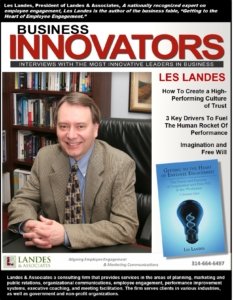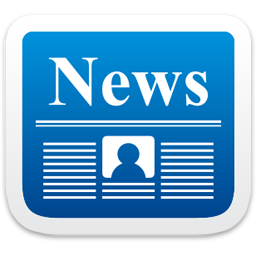
In this interview with Business Innovators Magazine, Les Landes offers a variety of tools and techniques for optimizing employee engagement and bringing out the best that people have to contribute to their organizations.
Connect the dots, and the picture becomes clear. Making employee trust and well-being the organization’s top strategic priority is more than a nice thing to do. It’s just good business.
But it takes more than perks, plaudits, and pats on the back to get employees performing at their best. It requires a whole new perspective on how to maintain positive adult-to-adult relationships in the workplace. It also takes the right kind of “people-first” policies, practices, and processes to put that perspective into practice and make it all work.
How To Re-engage Your Workforce To Become More Successful.
If you want to get employees fully engaged and aligned – especially in these difficult times – you need to know how to tap into the core of what makes people want to excel and do their very best. It starts with an understanding of what genuine engagement looks like. Landes defines it “As an emotional connection that employees feel for their organization or their work that gets them tuned in, turned on, and eager to go above and beyond.”
So how do you create that kind of connection? Fear of losing a job is certainly an emotional trigger, but that kind of motivation will eventually burn people out, and it rarely produces the best results. Tapping into a positive emotional response requires a deep appreciation of two unique qualities that make human beings different from all other living creatures on the planet — Free Will and Imagination.
We’ve all heard the phrase “free as a bird.” If you watch a bird flying around, it might look like they are free to do whatever they please. In actuality, birds are only “free” to do what they are programmed to do. They are programmed to fly. They are programmed to eat bugs and seeds. They are programmed to build nests, lay eggs, and bring baby birds into the world. The bottom line, all animals operate from a preset program with no real choice about what they do.
People have programs, too, mainly for the same purpose as other animals – comfort, safety, and survival. They also have the uniquely human gift of free will. Not only do humans have a choice in what they do, they actually can’t function at their best if they are constrained from using that special gift.
The second quality that’s unique to human beings is their imagination. Unlike animals, people can conceive of things that do not exist in the natural world. They can envision building magnificent structures, writing great novels, and even flying like a bird. People can do those things not because they are more intelligent than animals, but because they can imagine. Then they can use their free will to bypass their “animal programming” and bring what they imagine to life.
So what do “Imagination” and “Free Will” have to do with creating a world-class workplace?
Plenty. In the end, anything you do to undermine those uniquely human qualities cuts at the heart of what sparks and enables people to go above and beyond and perform at their best. It is crucial to understand that no amount of discipline and direction can surpass the intrinsic motivation to excel that comes from the human drive to imagine and create.
That raises a critical management question. If everyone is let loose to use their imagination and free will, how do you maintain discipline and keep things from flying out of control? By themselves, imagination and free will are not enough to bring out the best in people or organizations.
Employees also need a sense of order and predictability in the workplace. That’s essential for people to succeed as a team. Employees understand that. In fact, they expect it. But how can freedom and control work together?
Landes Compares A Human Being To A Rocket.
- Start with the engines that propel the rocket up in the air. For people, that’s imagination and free will – the force that produces innovation, breakthroughs, new ideas, even the desire to excel.
- Then, you need stabilizers, so the rocket doesn’t wobble out of control. Think of that as security and self-esteem for people. Without that kind of stability, employees get “wobbly,” too.
- The third piece is the guidance system. Just like rockets, people need a clear sense of direction in order to get to the desired destination. For human beings, those directional requirements are responsibility and accountability. People need to be clear what they’re responsible for, and they need to be held accountable for doing it in a constructive and supportive way.
When all three of those components synchronize together – imagination and free will, security and self-esteem, and responsibility and accountability – you have a “human rocket” that can soar to great heights and produce extraordinary results.

